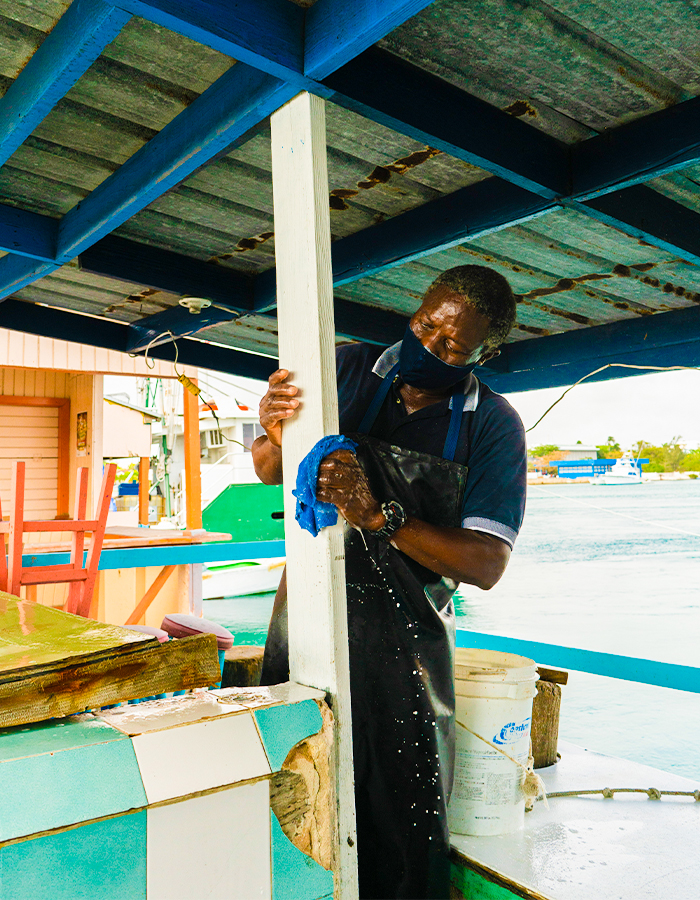Belgium

Belgium said, “no way!” to Americans. The country decided to restrict all entry from travelers not arriving from the European Union, Switzerland, or the United Kingdom. Those who were nationals of Belgium could still enter, but they were required to quarantine for 14 days upon arrival.
Thankfully, the restriction was lifted May 23, 2022, and Americans are allowed once again to enter the country.
There are a few other select countries that Belgium allows entry to if they’re diplomats, humanitarians, or military personnel (but America isn’t on that list). For such a small country, it’s been hit pretty hard. The country has had around 10,000 deaths and over 50,000 confirmed cases.
Denmark

Denmark took it a step further than some European countries. The country opened its borders to most travelers from the EU and the UK, except Portugal, Sweden, and Bulgaria. That’s pretty understandable, considering how they handled the epidemic.
The country opened its borders again to vaccinated Americans June 5, 2021.
A handful of countries aren’t restricted, including Australia, Canada, Japan, New Zealand, and a few others. According to the government, people from those countries are allowed to enter without a two-week quarantine, but they need to have a “worthy purpose.” Notice how America isn’t on that list?
Finland

Finland started to ease restrictions, but that didn't mean they were welcoming Americans. The Finnish Border Guard had and maintained a list of countries that they were allowing in, including most countries in the EU and the United Kingdom.
Restrictions for Americans were finally lifted on June 30, 2022.
Finland is also accepting travel between Finland and Australia, South Korea, Japan, New Zealand, and a select few other countries. People traveling from these places must be coming to the country for work or essential purposes. Finland was never hit that hard, and so far, it hasn’t even reached over 200 active cases.
France

France is one of the top travel destinations for many Americans, but we had to wait a bit longer before we could see the Eiffel Tower again. The Parisian destination restricted travel from all foreign nationals except those from the EU, UK, the Vatican City, Iceland, Switzerland, Norway, Japan, New Zealand, South Korea, and a few other countries.
June 9, 2021 marked the glorious day Americans were allowed back in the see the sights.
Some people from select countries don’t even have to self-isolate. Lucky them. As we all know, France had a high number of cases at the beginning of the COVID-19 outbreak. The country doesn’t want to take any chances. There have already been over 30,000 deaths, so they’d like to keep their infection rate down to a minimum. Unfortunately, cases are beginning to rise once again.
Germany

Germany, like the rest of the EU, had relaxed entry restrictions for specific countries. Countries inside the EU, the UK, Australia, Georgia, Canada, New Zealand, Thailand, and Uruguay were all allowed into Germany. Anyone else? Completely barred.
That is, until June 25, 2021, when they opened their borders to U.S. tourists again.
However, a person could travel to one of those countries, remain there for two weeks, and then enter Germany. Quarantine may still be required, but this can vary depending on the Germany state. Travelers from high-risk areas are required to quarantine for 14 days, according to the national government.
Australia

Australia wanted to follow New Zealand’s lead. Being an island, it should be easy as long as the country restricts travel. Well, that’s exactly what they did. The country blocked everyone except New Zealand nationals residing in Australia, diplomats, permanent residents, and their immediate family.
Borders didn't open to Americans again until February 21, 2022.
Those coming to the Aussie Outback still need to quarantine for 14 days, regardless of where they’re coming from. The country recently broke 15,000 cases, and they don’t even have 200 deaths. Unfortunately, Australia also had the deadliest day yet with 10 deaths in one day.
Greece

Greece blocked American tourists, but it resumed flights from many European countries. Other than Greece’s residents coming home, the only people allowed to enter were healthcare professionals, government members, diplomats, military personnel, humanitarian workers, airline crew, and travelers in transit.
Borders officially opened again on May 14, 2021, making Greece one of the first major European destinations to reopen to tourists ahead of the summer season.
Anyone that arrives from the European Union is required to get tested for COVID-19 and quarantine themselves. Even though nearby countries were slammed, Greece has had relatively low numbers. The country has over 4,000 cases and a little over 200 deaths – sad, but not bad considering those around them.
Iceland

Iceland followed the European Union’s mandate, barring citizens of most countries (including America). The only people who could come to Iceland were those in the European Economic Area, Andorra, Monaco, San Marino, Switzerland, Vatican City, and the United Kingdom.
Americans weren't allowed to visit until March 18, 2021.
It doesn’t matter where they’re coming from, everyone who enters the country has to undergo a COVID-19 test or self-isolate for 14 days. Even if they’re an Icelandic resident returning, they have to get a COVID test and “take special precautions” for the first five days upon arrival whether they test positive or not. Iceland dealt with the virus much better than any other country, as they only have had 10 deaths and 1,800 cases total.
Italy

Everyone knows what happened in Italy. They were the first to suffer COVID-19 on a massive scale, which caught the world’s attention. Italy shut down its borders and only opened it back up to travelers arriving from the EU, Australia, Japan, Canada, New Zealand, and a handful of other countries, none of which were America.
America wasn't welcome back to Italy until June 21, 2021, which was sooner than many of its neighboring countries.
Italy has had nearly 250,000 positive cases, a massive number. The country has also had over 35,000 deaths, and that number is still climbing. Many people say that Italy could have broken the negative streak, but only time will tell. One thing is for sure: America won’t be allowed any time soon.
The Bahamas

At first, the Bahamas allowed Americans on the cluster of islands, along with tons of other nations. But following an uptick in Covid-19 cases, the Bahamas once again closed its borders to travelers from the U.S on July 22, 2020. Just four days later, on July 26th, the decision to close was reversed, as the country couldn't afford to lose the revenue from tourism. Americans were welcome as long as they showed evidence of a negative test.
Tourists from all nations require a 14-day quarantine at a government facility upon arrival. They’ve also banned many other countries from even coming to the Bahamas. The islands have nearly 400 cases with 11 deaths.
China

China completely restricted all access to foreign nationals, except those from Hong Kong, Macau, and Taiwan. Travelers coming into China were required to undergo medical screening and a mandatory 14-day quarantine. Even airline crew had to undergo screening and self-isolate at their hotel until their results came in.
China's borders weren't open again for Americans until a whopping three years later on January 8, 2023.
Even if China allowed American residents in the country, American officials declared that the country shouldn’t be visited. Couple that with the tense relations between America and China, it wouldn’t be the best place to visit anyway.
Netherlands

The Netherlands followed the same guidelines as other EU companies. The nation only allowed tourism from countries in the European Union. As of July 1, 2021, they began accepting non-essential travel from the following countries: Algeria, Australia, Canada, Japan, New Zealand, South Korea, Thailand, and several other places (none of which were America).
The Netherlands officially reopened its border to U.S. travelers on June 24th, 2021.
The Netherlands have had just over 50,000 infected and 6,100 deaths. For this reason, they want to contain the virus as much as they can. Anyone from a high-risk country must quarantine themselves for 14 days and present a completed Health Declaration form.
Norway

Norway lifted restrictions and quarantine requirements on travelers coming from most European Union countries. Basically, they must have an “acceptable level of infection.” The odd thing is that Norway required high-risk countries to quarantine for 10 days rather than 14 days. High-risk countries included Sweden, Andorra, Bulgaria, Croatia, Portugal, Luxembourg, Romania, and Spain. America was barred altogether.
America was banned from visiting Norway until February 12, 2022.
Despite being so close to Sweden, Norway has managed to avoid the brunt of the COVID-19 pandemic. They’ve had over 9,100 confirmed cases and a little over 250 deaths. It’s understandable that the nation would block so many countries from coming in.
Japan

When Japan started opening its borders, the United States popped up as a banned country. No visitors from America were allowed, but we were not alone. There was a long list of countries that Japan blocked, including the United Kingdom – a country most EU nations put on their “accepted” list. Travelers and airline crew had to still undergo testing and a 14-day quarantine upon arrival.
America was finally allowed to step foot in Japan again on October 11, 2022.
Japan’s size is a third of the United States, but its infection rate is relatively low. The nation has only had around 33,000 infections and 1,000 deaths. Compared to America, our infection rate is over four million, with more than 150,000 deaths.
Poland

Poland decided to accept people from the EU, Norway, Switzerland, the UK, Japan, and a few other countries. America wasn't allowed due to surging cases. People from the EU were allowed to enter without quarantine, but anyone outside of the EU had to self-isolate. There were some exceptions, including many worker positions, students, airline crew, and diplomatic members.
America was welcomed back into Poland on February 12, 2022.
Poland has had over 44,000 cases, but the number of deaths remains relatively low. Currently, they’ve had around 1,700 deaths, which isn’t bad for a country of 38 million. When American cases begin to decrease, Poland will consider allowing U.S. residents into the nation.
Portugal

Portugal wasn't necessarily completely closed to Americans, but the nation had prohibited all non-essential travel. This means anyone traveling for a vacation as a tourist wasn't allowed entry. The tricky part is that some airlines were still selling tickets between the United States and Portugal. Talk about confusing.
Portugal officially opened its borders back up to Americans on June 15, 2021.
The flights are mainly for Portuguese residents who are stuck in another country. However, some carriers are allowing anyone to buy tickets. Be careful not to fall into this trap! Anyone traveling to the nation must have had a negative COVID-19 test within the last 72 hours, resident or not. They’ll also have to go through a health screening. Portugal is taking this pandemic very seriously.
New Zealand

New Zealand is famous for handling COVID-19 the correct way. It may have been easier for them (due to being an island), but the nation managed to remain COVID-free for over 24 days. Unfortunately, visitors from the UK came to the little island and ruined that streak. They had been given a special pass because their parent was dying.
America was allowed to return to the island on May 2, 2022.
Just as everyone was getting used to a post-lockdown world where parties were allowed, they must take things seriously again. The country has restricted entry to anyone who isn’t a permanent resident or national of New Zealand. Anyone who enters must undergo a 14-day quarantine. They’re looking forward to beginning their COVID-free streak again.
Spain

Spain reopened its borders to travelers arriving from the EU and the UK. Outside of those two areas, only Spanish nationals and residents could enter the country. Spain was taking each country on a case-by-case basis, and it had only recently opened up to Portugal. You can bet America wasn't able to travel to the country for a while.
Spain's borders finally opened to Americans on June 8, 2021.
When anyone gets to Spain, they must complete an “FCS health control form” and go through a health assessment. Even if someone is coming from the EU, they’re only allowed to go to specific airports. This is to cut down on spread if someone does enter when infected. Spain has over 280,000 cases and around 28,400 deaths.
Sweden

Sweden was extremely controversial. The country refused to go under lockdown, allowing everyone to get infected through herd immunity. Even though they didn’t actively fight the infection, they didn’t allow visitors from outside the country for a long time. It finally allowed foreign travelers from the EU and UK. No other countries were added for a while.
Americans weren't allowed back into the country until June 30, 2021.
Because American cases have increased rapidly, Sweden likely won’t allow American residents to come to the country for quite a while. While the country wants to move toward herd immunity, introducing different strains of the virus could cause a major issue for Sweden. A select few other countries are allowed to enter Sweden if they have an essential reason.
Switzerland

Switzerland was on many lists for the EU, so naturally, they allowed travelers from the EU. The country also eased restrictions on the UK, Iceland, and Norway. Travelers had to have necessary visas and permits to enter, and people from certain countries were required to quarantine for ten days upon arrival.
Americans were allowed in Switzerland on June 28, 2021.
The population is rather small, only being about 8.5 million. However, the country has already had about 34,600 cases and over 1,700 deaths. Like most of the other countries on this list, Switzerland is regularly addressing whether or not more countries will be added or removed from entry. It all depends on their infection rate.
Canada

Canada may only be a hop, skip, and jump away from the American border, but they told Americans they couldn't come over. Unless an American was there for an essential reason, they had to stay home. Things between America and Canada had been tense, to say the least, as US officials refused to send Canada PPE.
Canada finally allowed (fully vaccinated) Americans to return on August 9, 2021.
Canada has managed to keep the infection rate rather low considering. They’ve had over 115,000 confirmed cases and around 8,900 deaths. A report from Newsweek reported that Americans are dying of COVID at a rate 17 times higher than Canadians, so maybe there’s a good reason we aren’t allowed there.
Peru

Peru not only closed borders to Americans but for the entire world. No one was allowed in the country unless they were Peruvian nationals or residents trying to get home. Even then, they were required to quarantine for at least 14 days. Even airline crew had to self-isolate in a hotel for the entire duration of their stay (regardless of how long it was).
Peru opened its borders to Americans again on October 5, 2020.
Peru has struggled with the pandemic. They’ve had over 400,000 confirmed cases and nearly 19,000 deaths. That’s pretty shocking, considering the country’s population is just 32 million. They’re about the size of Canada but have four times as many infections.
Colombia

Colombia suspended international flights for a while, regardless of whether it was filled with Colombian nationals or not. The country also restricted entry and transit to all travelers except for cargo operators, humanitarians, and extreme scenarios.
It didn't open its borders to Americans until September 21, 2020.
Those scenarios require approval from the Civil Aviation Authority before being allowed entry. Anyone arriving in the country (regardless of reason) must undergo a 14-day quarantine and complete a “Control Preventivo Contra el Coronavirus” form, which basically allows the government to keep in contact with the person just in case they are ill.
Argentina

Argentina followed the lead of most other South American countries. They restricted entry to all foreign nationals. The country allowed citizens or residents to return until August 2, 2020. Anyone who came into the country had to quarantine themselves for 14 days.
The borders weren't open for Americans until November 1, 2021.
On top of that, any flights that enter Argentina must include passenger information to the Argentinian government 12 hours before departure. Not doing so may risk entry denial. There’s no word when Argentina will allow North Americans to enter again, so we’ll just have to wait and see.
 Author
Jennifer Freehill
Last Updated: December 18, 2024
Author
Jennifer Freehill
Last Updated: December 18, 2024
